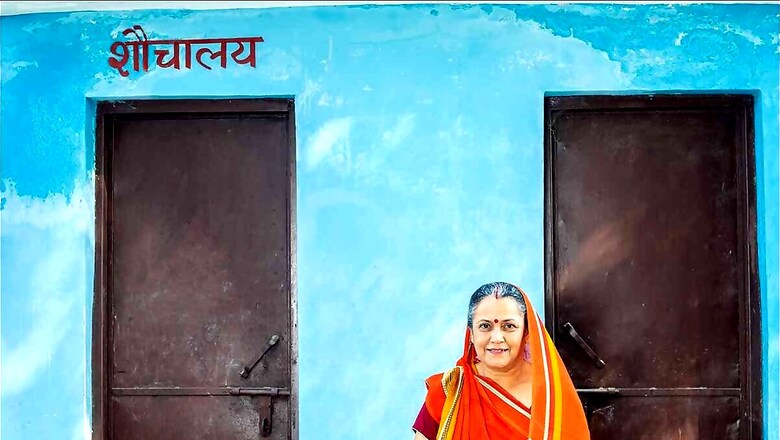
views
Monsoon season is a time of heavy rainfall and flooding in many parts of the world, especially in South and Southeast Asia. While the monsoon brings relief from the heat and drought, it also poses serious challenges for sanitation facilities and practices. Many toilets are not designed to withstand the impact of monsoon, resulting in overflowing, clogging, or collapsing of latrines. This exposes people to the risk of diseases such as diarrhoea, cholera, typhoid, and hepatitis, as well as environmental pollution and degradation.
To address this problem, toilets must be upgraded to monsoon-proof toilet designs. Monsoon-proof toilets are built with materials and techniques that can resist water damage and ensure proper functioning during monsoon. They can be either pit latrines, septic tanks, or biogas digesters, depending on the availability of resources and preferences of the users. Monsoon-proof toilets can prevent the contamination of water sources, reduce the spread of pathogens, and improve the quality of life and dignity of the people.
However, simply providing monsoon-proof toilets is not enough to ensure their adoption and maintenance. Many people are unaware of the benefits of monsoon-proof toilets, or have cultural and behavioural barriers that prevent them from using them. Therefore, awareness campaigns are essential to educate and persuade people to adopt and maintain monsoon-proof toilets. Awareness campaigns are organised efforts to disseminate information and messages about a specific issue or cause to a target audience, with the aim of influencing their knowledge, attitudes, and behaviours.
Identifying Behavioural Barriers to Adoption of Monsoon-Proof Toilets
The Swachh Bharat Mission is considered to have been the world’s largest sanitation programme, which had high-level political support and catalysed a mass movement that engaged government, households and the private sector. It also used community-led methodologies that focused on behaviour change for better sanitation.
According to a report of the Sub-Group of Chief Ministers on Swachh Bharat Abhiyaan, behavioural change is an area of continued focus. The Behaviour Change Communication (BCC) strategy includes measures like:
- Involving political and social/thought leaders, celebrities and media houses to spread the message of the importance of cleanliness and sanitation.
- Extensive media campaigns in the form of electronic, web and print to be used for conveying messages and encouraging the people to pay for usage of public toilets for their sustainability.
- Advocacy of the concept of three R’s: Reduce, Reuse and Recycle.
- Communications to ensure that cleaning occupations must be seen as dignified work and widely respected.
The Sub-Group of Chief Ministers also came up with an education strategy that encompasses several key measures:
- Inculcating sanitation practices in children by including a chapter in the school curriculum from the first standard itself.
- In each school and college, a team of students may be formed which will be called the ‘Swachhata Senani’, to spread awareness about sanitation and cleanliness
- Skill Development courses/ Diploma courses may be introduced in State ITIs and polytechnics/ colleges to train personnel in the field of solid and liquid waste management.
- Specialised courses on Environmental Sciences, Public Health Engineering and Municipal Engineering with focus on sanitation and waste management may be introduced at undergraduate and postgraduate level.
- Joint Research Programmes with foreign universities/higher educational institutions would enhance knowledge and capacities to work on waste management technologies.
Creating Awareness Through Targeted Campaigns
Harpic, India’s leading brand in the lavatory care segment, has built strong communication strategies around the need for good toilet hygiene habits in particular, and sanitation overall. Harpic decided to take the lead in the sanitation and hygiene movement by creating innovative, thought provoking campaigns and outreach programs.
Harpic has also partnered with News18 in the Mission Swachhta aur Paani Initiative, which has, for 3 years now, championed the cause of inclusive sanitation where everyone has access to clean toilets. It advocates equality for all genders, abilities, castes and classes and strongly believes that clean toilets are a shared responsibility.
Under the aegis of Mission Swachhta aur Paani, Harpic partnered with Sesame Workshop India, an educational non-profit working for the early developmental needs of young children, to promote positive sanitation, hygiene knowledge and behaviours among children and families through schools and communities, engaging with 17.5 million children across India. This, in addition to the messaging they already aimed at adults.
In addition to creating programming aimed at young children, Mission Swachhta aur Paani also pioneered a programme to raise awareness and reinforce healthy toilet and bathroom habits among young children, developing and recognising them as “Swachhta Champions”. As a part of the Swachhta ki Paathshaala initiative this year, well known actor and celebrity mom Shilpa Shetty visited the Primary School Naruar in Varanasi, to talk to children about good toilet habits, hygiene and its link to good health.
In addition to these outreach programs, Mission Swachhta aur Paani also serves as a valuable platform that brings together various stakeholders from the government, municipalities, NGOs, grassroots organisations, activists and environmental groups to come together, and build consensus on what needs to be the road ahead on key issues surrounding toilet access and sanitation.
These awareness campaigns play a pivotal role in bringing about behavioural changes in communities, especially in rural areas where traditions and practices often remain deeply rooted. Initiatives like Mission Swachhta aur Paani, which employ various communication channels, including radio, television, social media, and community meetings to disseminate critical information about the importance of monsoon-proof toilets, create a ripple of positive effects.
For one, these campaigns emphasise the health risks associated with open defecation and the improper disposal of human waste during the monsoon. They educate communities about the transmission of diseases through contaminated water and the role of monsoon-proof toilets in curbing these risks.
They also focus on empowering women and girls, highlighting how access to safe and hygienic toilets enhances their dignity, safety, and overall well-being. This approach helps break the stigma surrounding sanitation and encourages families to prioritise the construction of proper toilets.
But most importantly, they help build community engagement through involvement of local leaders, volunteers, and influencers to spread the message effectively. Moreover, these campaigns also address misconceptions and fears about toilet construction, encouraging communities to take ownership of the process. Once we have community engagement, we have ownership and responsibility. And that’s how, brick by brick, monsoon-proof toilet by monsoon-proof toilet, we can build a Swasth and Swachh Bharat.

















Comments
0 comment